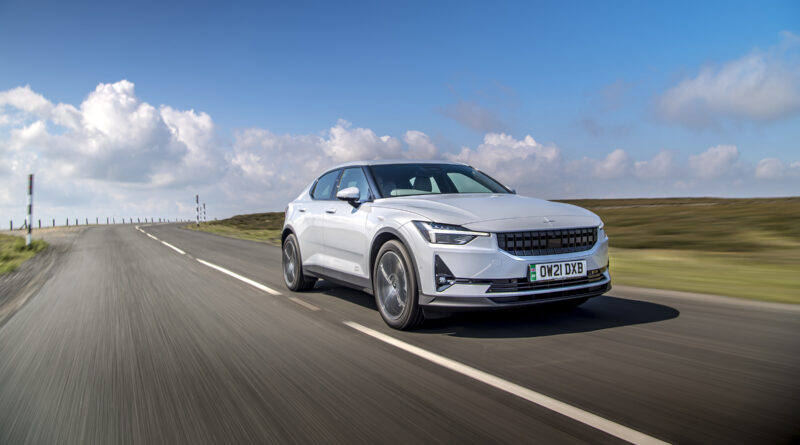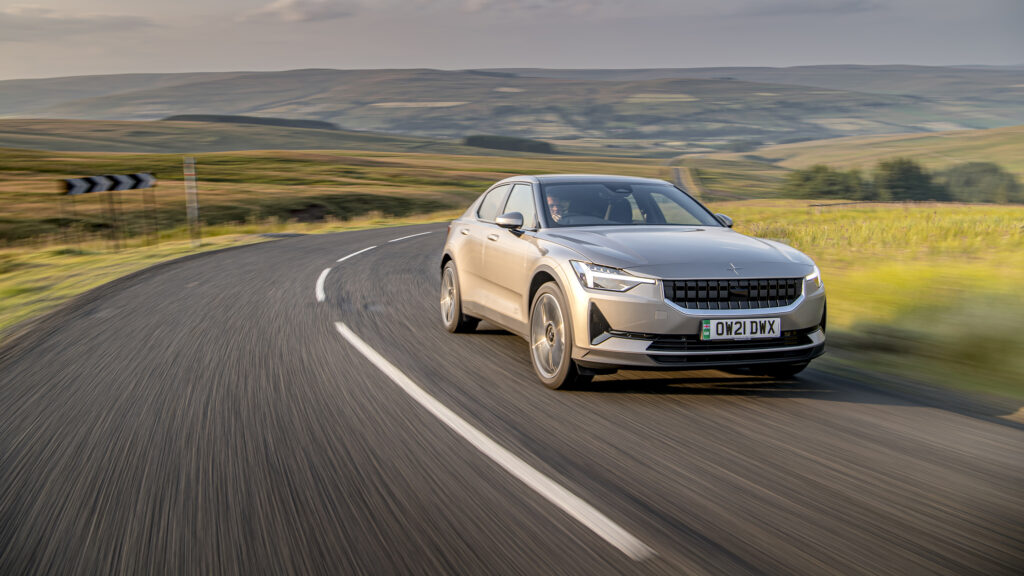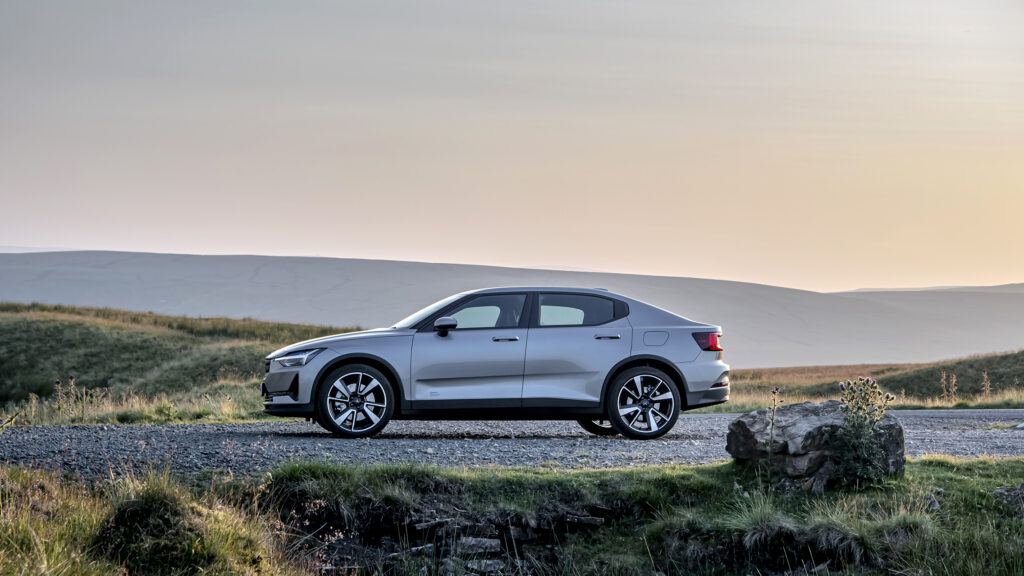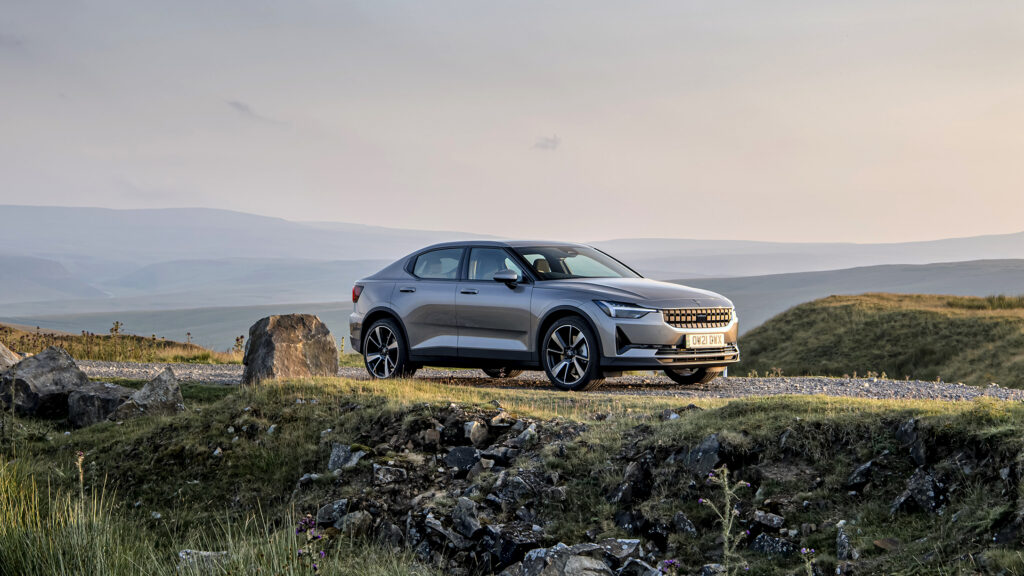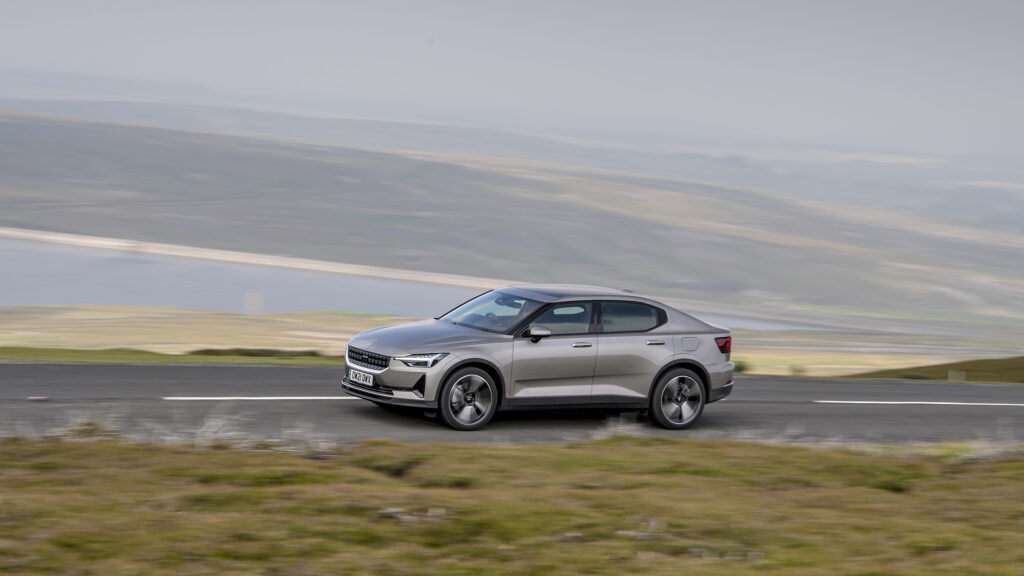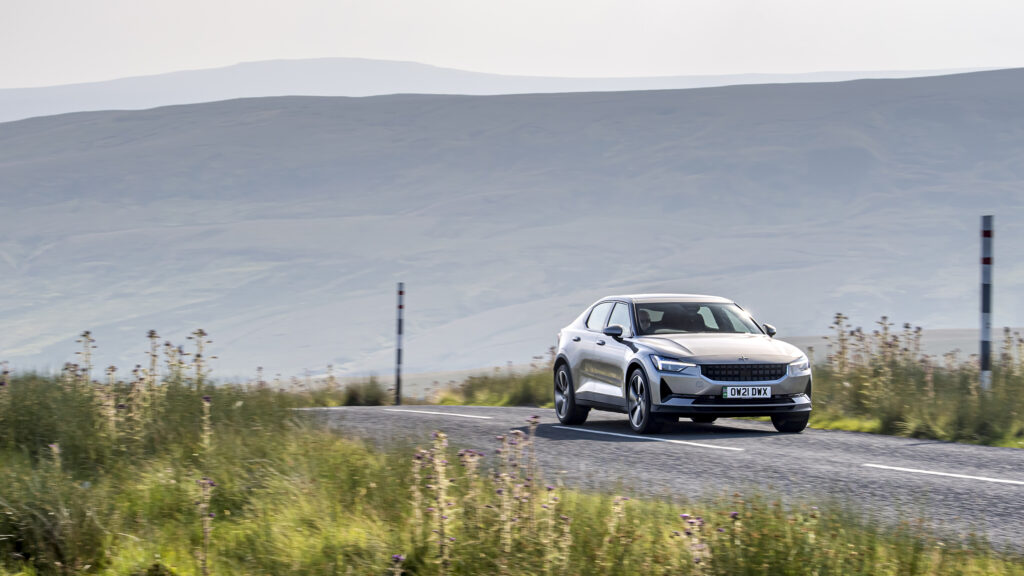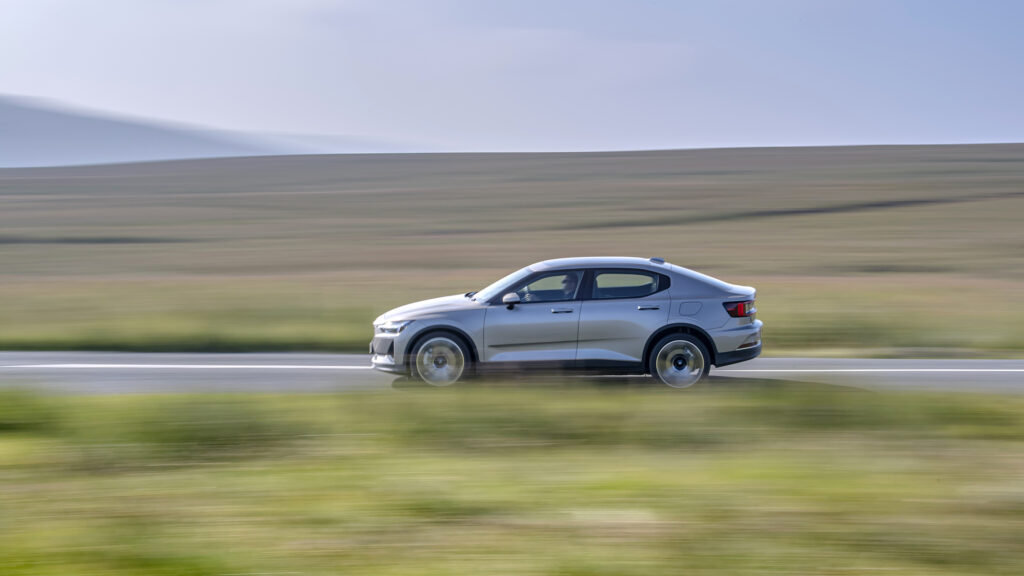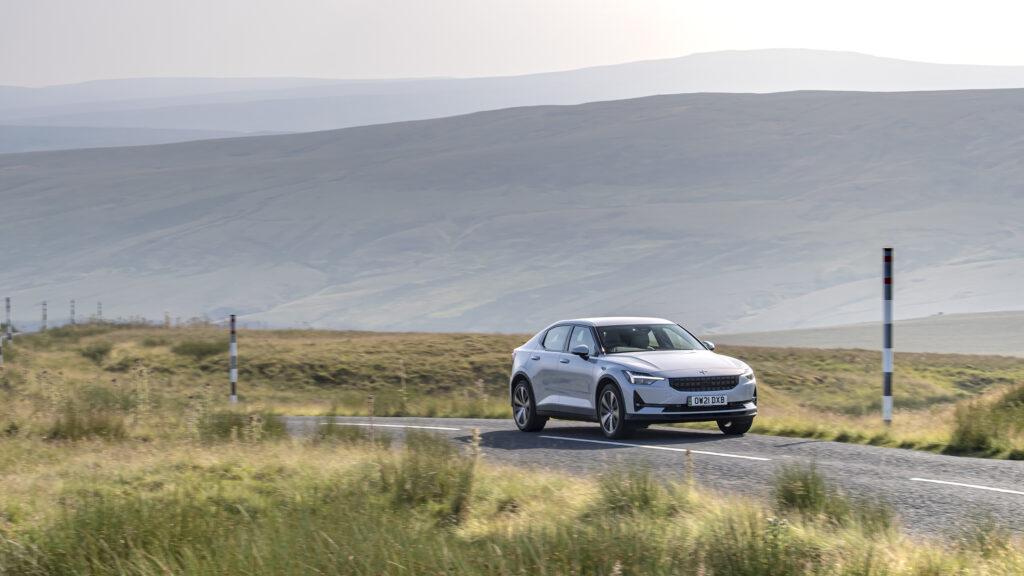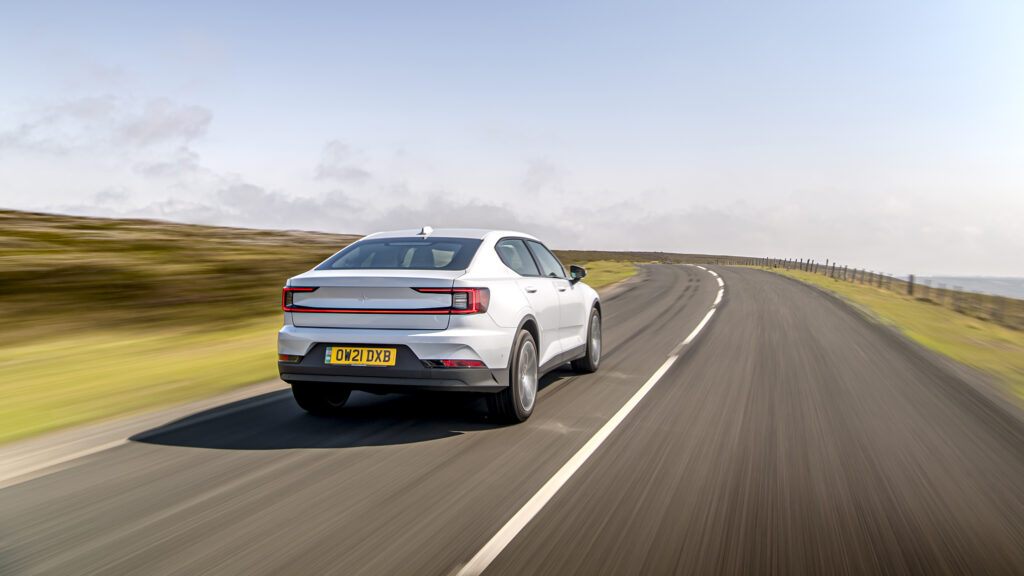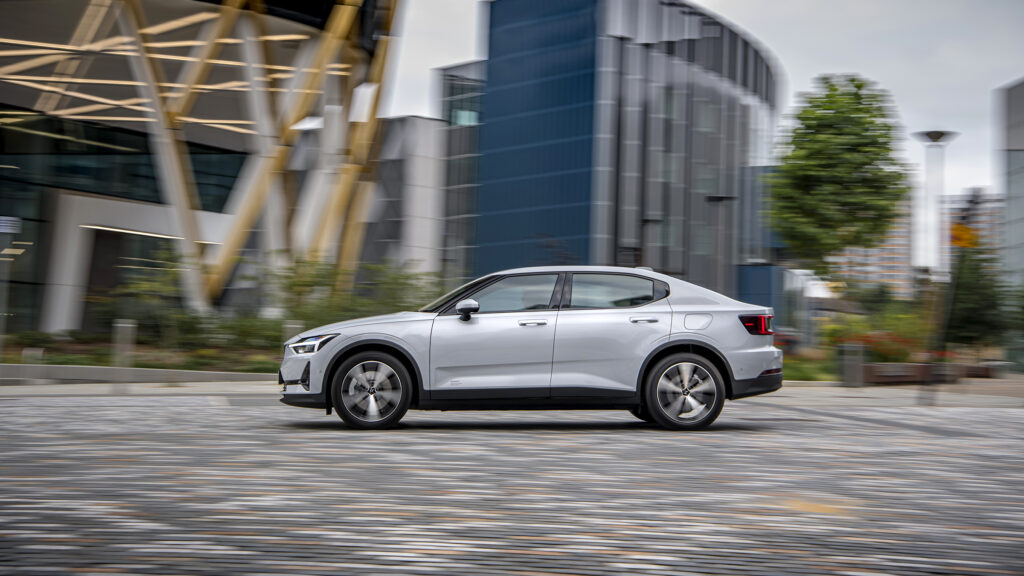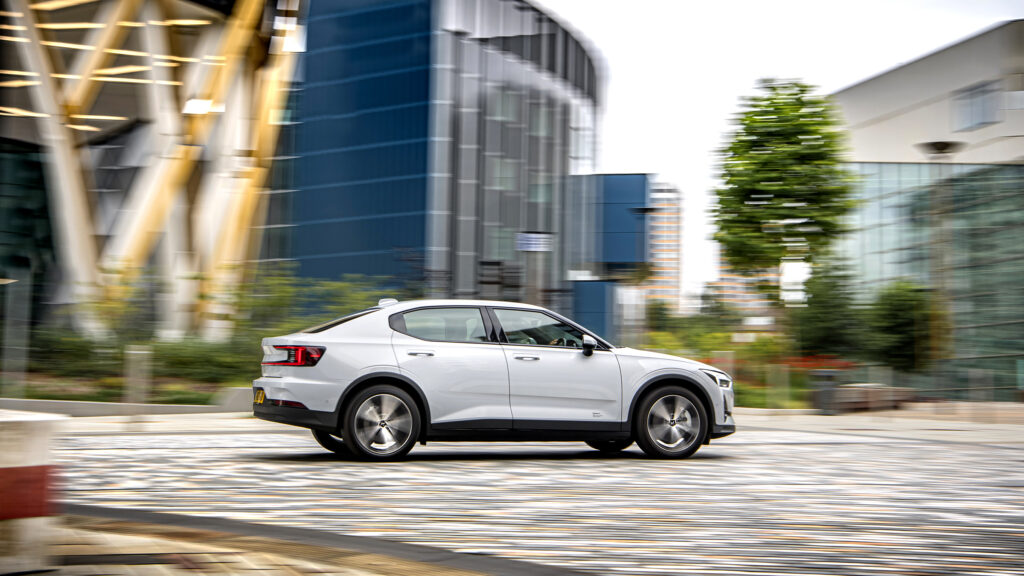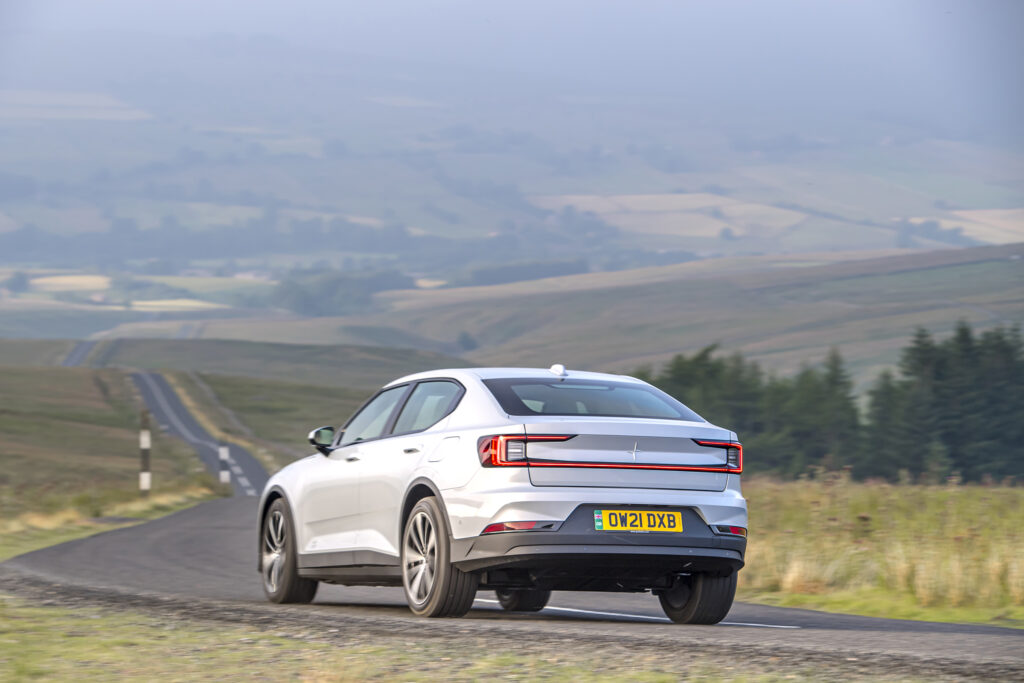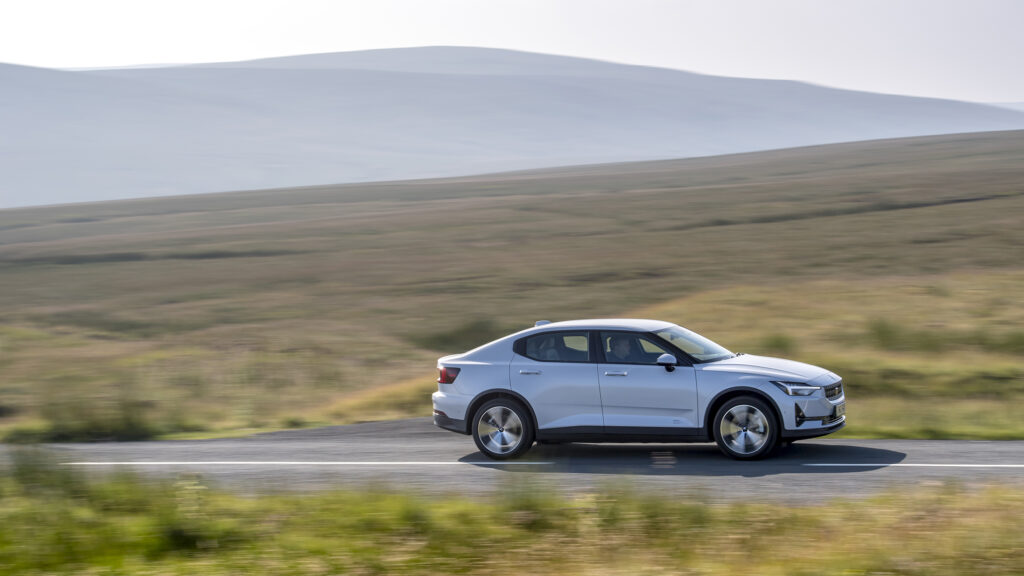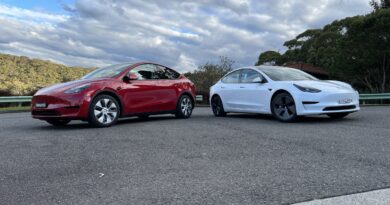Polestar 2 Standard Range, Long Range review
Polestar is one of the many new brands we’ll soon see in Australia.
Born from Volvo and its parent company Geely, Polestar is based in Sweden and manufactures its cars in China.
Its first car – the Polestar 1 – was a hybrid, but every Polestar sold in Australia will be an EV.
It starts with the Polestar 2, a crossover-style four-door with coupe inspiration.
The brand is clearly aiming at Tesla and the Polestar 2 aligns closely with the Tesla Model 3 on size and its model range. The Polestar 2 is expected to take on the Model 3 with pricing, too, although local pricing hasn’t been announced yet.
UPDATE: Polestar 2 pricing confirmed: starting from $59,900 plus on-road costs
Polestar goes on sale in Australia later in 2021 but we’ve jumped behind the wheel in Europe to sample this important EV newcomer.
Battery packs, motors, ranges
Topping the Polestar 2 range is the Long Range dual motor variant. It uses the same platform, electric motors and battery pack as the Volvo XC40 Pure Electric.
That means a 78kWh lithium-ion battery pack (75kWh of which is usable) and identical 150kW and 330Nm electric motors for each axle. Combined, the two motors make 300kW and 660Nm.
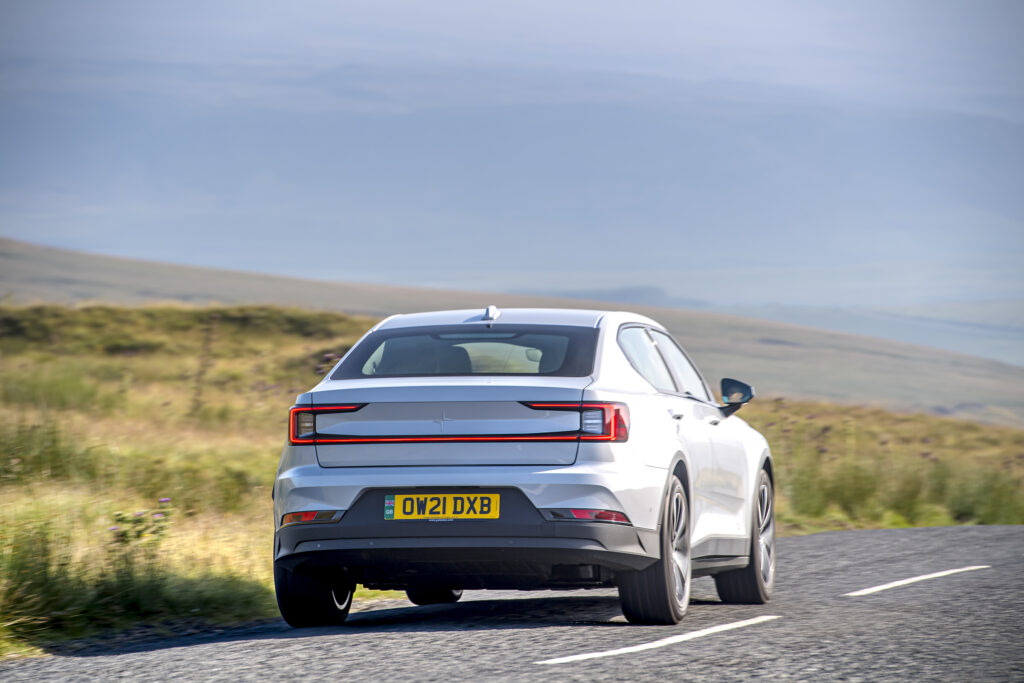
Polestar claims a 0-100km/h acceleration time for this variant of a snappy 4.7 seconds. Its WLTP-rated driving range is 480km.
It’s the middle-ranking Polestar 2 that’s the line-up’s range champion. The Long Range single motor, which has the same battery pack as the Long Range dual motor, has a WLTP-rated range of 540km.
The WLTP range of the Standard Range single motor Polestar 2 is 440km. It’s battery pack is smaller, with a usable capacity of 61kWh.
The Single Motor versions are both front-drive, a result of the Polestar 2 being built on the versatile CMA platform jointly developed by Volvo and its Chinese parent Geely for small-ish front-drive and all-wheel-drive models. CMA was designed to provide a basis for ICE-powered, PHEV and EV vehicles. The Volvo XC40 range, for example, covers all three.
There’s a small difference in the power outputs of the Long Range and Standard Range versions of the Polestar 2. They are 170kW and 165kW respectively, though the maximum torque for both is 330kW.
There’s no difference in performance, presumably because the lighter battery pack of the Standard Range offsets its small power deficit. Polestar’s claim for both is 0-100km/h in 7.4 seconds.
Though of only academic interest to Australian customers, the top speed of the Single Motor variants is only 160km/h. The Dual Motor is good for 205km/h.
Charging
The onboard AC charger of the Polestar 2 can take up to 11kW from a home wallbox or a public plug. This is better than some other comparable EVs and matches the Model 3. For example, the Nissan Leaf e+ has a battery pack with a capacity close to the 2 Standard Range, but has only a 6.6kW onboard AC charger.

DC fast charge rates vary according to battery pack capacity. The Standard Range variant can accept 125kW, but both variants with the larger Long Range pack take up to 150kW.
Size, space, style
Slightly smaller than the Model 3 in every key dimension except height, the 2 has a very different look. Tall-standing and slightly inelegant, the Polestar is a blunt-nosed, five-seat liftback sedan.
That large liftback gives the Polestar 2 an advantage over the Model 3, which has a small boot lid that makes using its luggage area more difficult. The Polestar’s flat-floored 405-litre cargo compartment is a decent size, and a small 35-litre tub underneath the bonnet is a handy place to stash cables or a small soft bag.
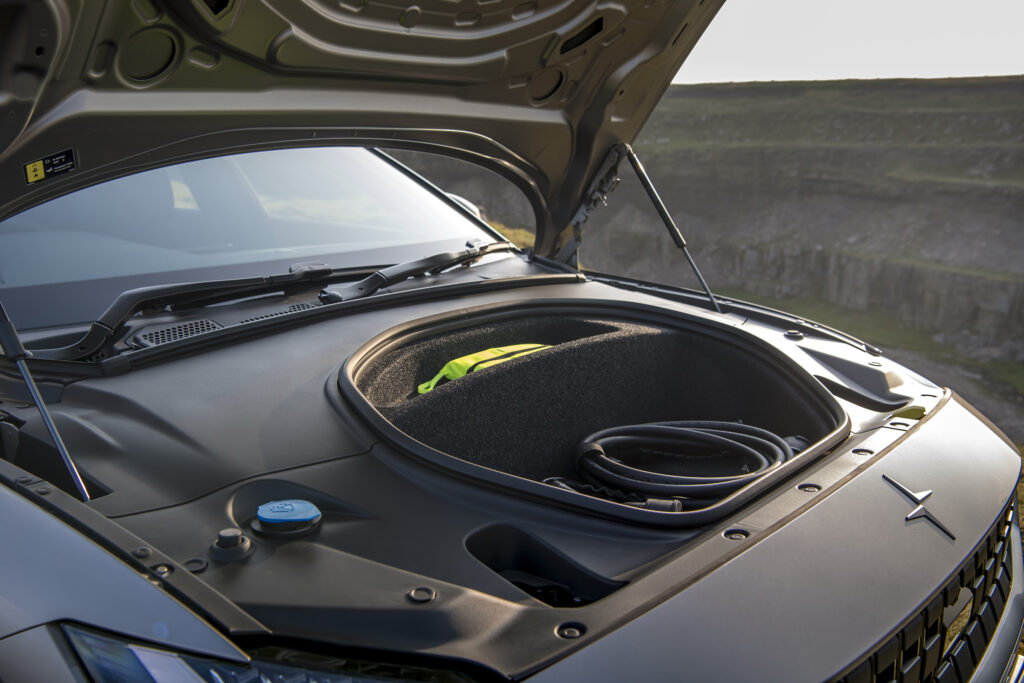
The Polestar doesn’t look aerodynamic… and it’s not. The company quotes a co-efficient of drag for the 2 of 0.28. That’s about 20 percent higher than the Model 3, and one of the most obvious reasons for the Polestar’s inferior driving range (which we’ll get to) compared to its Tesla rival.
Rear-seat room in the Polestar isn’t great. The 2 has a significantly shorter wheelbase than the Model 3, and the place the difference is most noticeable is lack of rear-seat knee room. It feels roughly equivalent to that in a small hatchback like a Volkswagen Golf or Mazda 3.
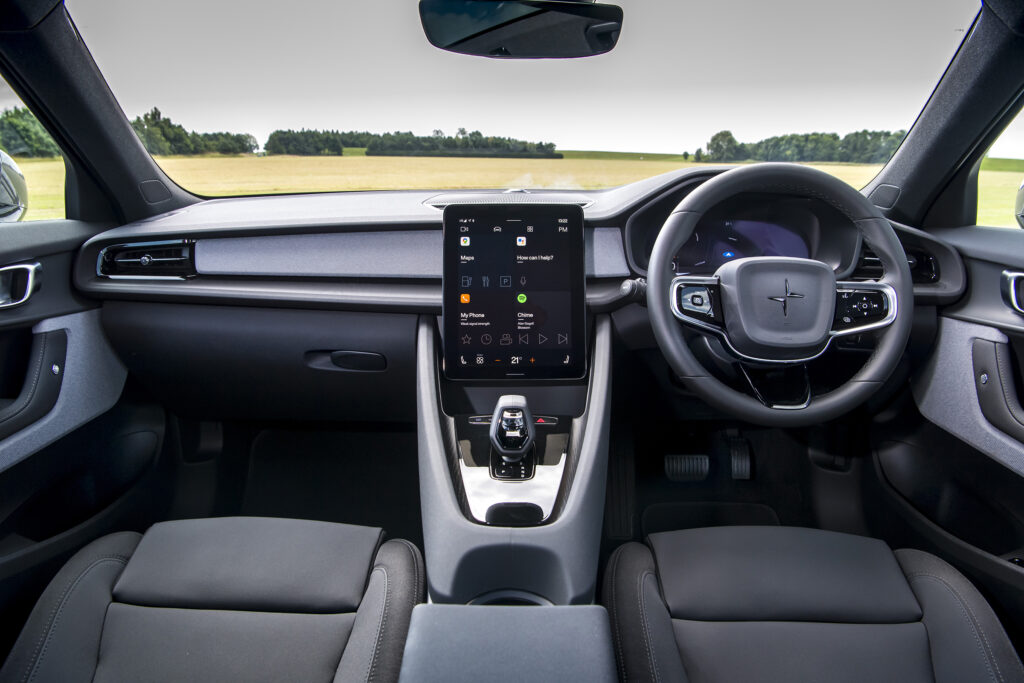
It’s a very different situation up front, where the quality of the 2’s interior and the supportive comfort of the seats are both much better than the Model 3.
The Polestar 2’s instrument panel is typical Scandinavian design simplicity. Clean and uncluttered to look at, simple to use, it’s made of materials that appear high quality.
Interior storage space is adequate rather than outstanding, but the Polestar’s interior does come with four USB-C ports.

The steering wheel, except for the Polestar emblem in its centre, and central screen look exactly like those found in anything recent from Volvo. No surprise here, as Polestar is basically an offshoot of the Chinese-owned Swedish brand.
The 2 is manufactured exclusively in China. So is the Australian-market Tesla Model 3 and the soon-to-arrive BMW iX3.
READ MORE: Why China will soon dominate EV sales in Australia
Infotainment and safety tech
Polestar claims the 2 is the first car in the world to feature an infotainment system powered by Android Automotive OS, which is very different to the Android Auto smartphone connectivity system. Android Automotive is the operating system for many of the car’s functions – not just phone connectivity – and comes with a bunch of familiar apps filling the high-resolution, portrait-oriented screen. Google Maps, Google Assistant and Google Store among them.
In Europe, three years of Google service connectivity are included in the price of the car, while over-the-air (OTA) updates are available for the lifetime of the vehicle.
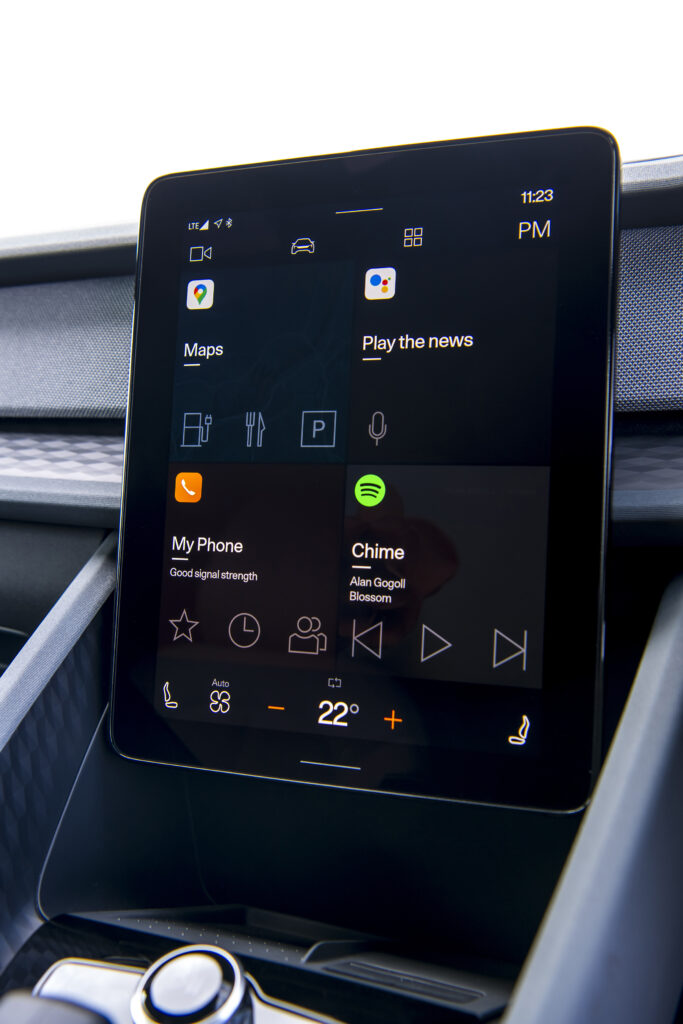
The centre display also provides access to vehicle set-up menus and status screens. These are clear, logically grouped and useful. They give the driver a good deal of control over the way the Polestar drives.
The Drive menu’s One Pedal Drive section offers the choice of three levels of regenerative braking; Off, Low or Standard. The Creep function, which imitates an ICE-powered automatic car by edging forward when the brake is released, can be enabled or disabled. Further, the assist level of the electric-powered steering can be set at Light, Standard or Firm.
While the Polestar 2 comes standard in Europe with auto emergency braking, more advanced safety systems are part of the Pilot Pack. This option covers all three Polestar 2 models, and includes things such as active cruise control and blind-spot warning. It’s the kind of stuff that should be standard from a Swedishly-safety-conscious and premium-priced brand.
Likewise optional on all is the Plus Pack, which adds a bunch of comfort and luxury items, including heated seats, a panoramic glass roof and an upgrade audio system.
The Performance Pack, only for the fast Long Range dual motor version, includes high-class Ohlins shock absorbers and Brembo brakes. It also buys 20-inch wheels, which are optional on all Polestar 2s, and gold-coloured seatbelts and brake calipers.
Driving
Getting moving in the Polestar 2 is very simple. Climb into the driver’s seat, press the brake pedal, tap the stubby selector on the centre console into D and drive away. The car senses the presence of the remote key and, via a sensor in the seat, the driver too.
The Dual Motor is seriously quick, though not quite in the same league as the fastest Model 3 Performance.
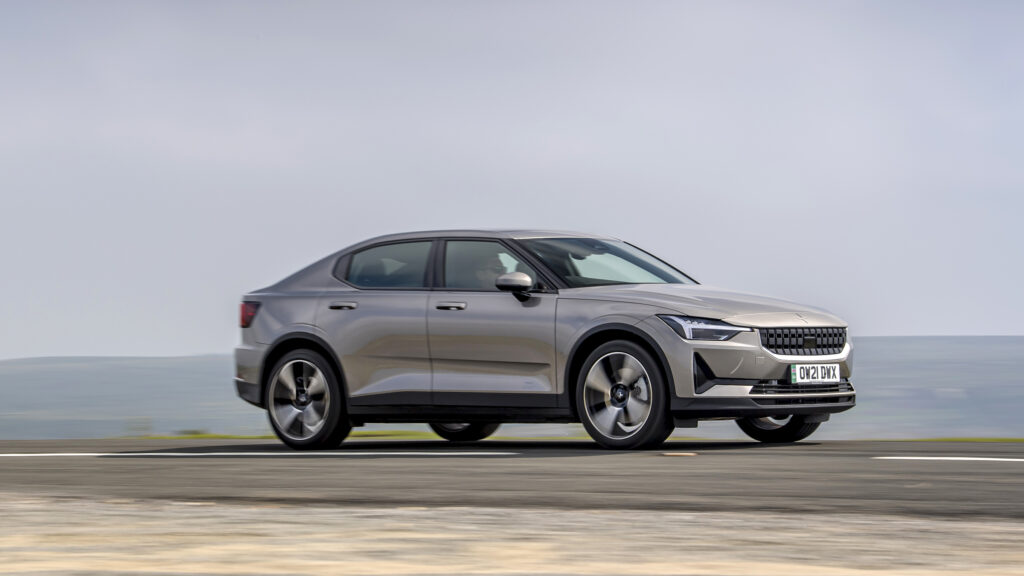
There’s little difference between the single motor variants. Though lacking the foot-flat thrill-factor of the Long Range dual motor, they deliver a strong enough dose of instant e-motor urge to make most drivers content.
The powertrain refinement of the Polestar 2 isn’t the best of the business. EV Central tried all three, and in each of them faint whining noises could be heard. While it sounded a lot like gear noise, it may also have been the e-motors or their inverters. In any case, the Polestar shows that EV powertrains aren’t inherently silent.
A more pleasant kind of surprise was the way the 2s handled. The exterior design and overall proportions of the Polestar don’t seem to offer much promise of agility, but it’s actually a pleasantly eager partner when driving with a little enthusiasm.
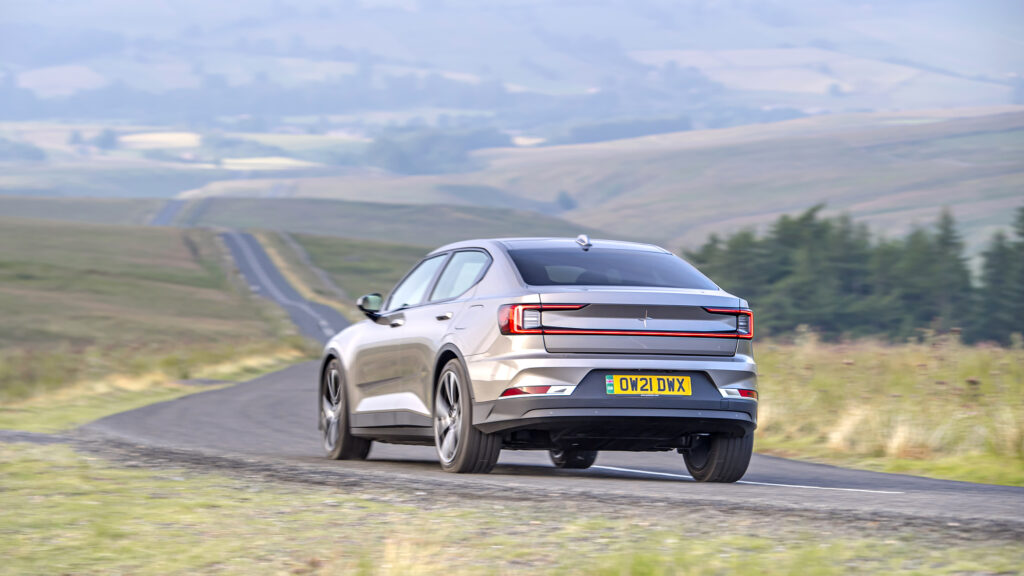
While the steering is feel-free and not as direct as that in a Model 3, the Polestar’s rather firm suspension set-up means it responds promptly and precisely to steering wheel inputs.
Weight distribution is close to the perfect 50:50 ratio, and the 2’s handling benefits. Both ends of the car contribute their fair share of grip, creating a confidence-inspiring sense of balance.
The traction control software is well-calibrated too. This is especially important in the two most affordable variants (Standard Range and Long Range single motors), but the system adeptly intervenes to prevent wheelspin even when accelerating hard from standstill at a T-junction.
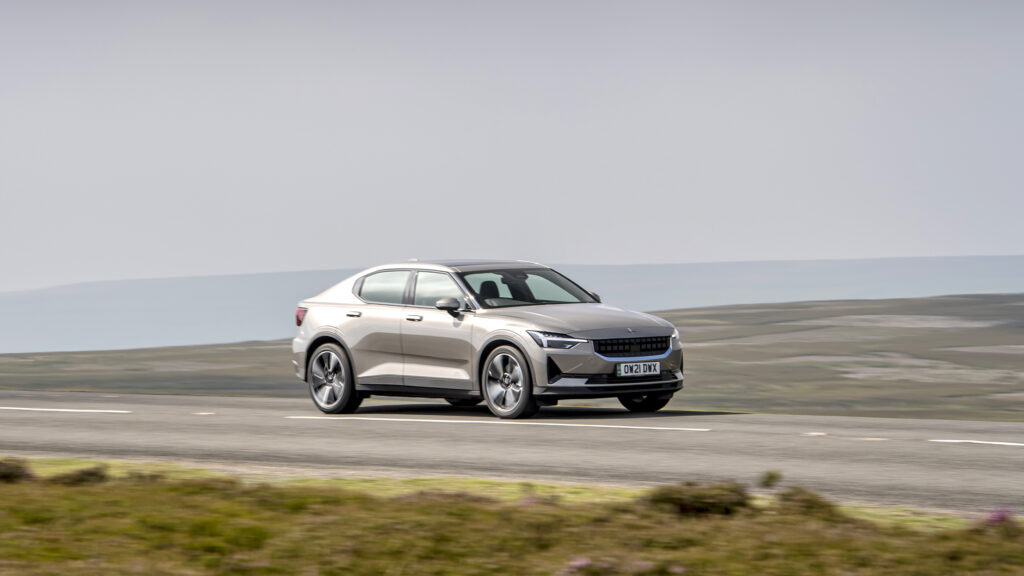
The Polestar 2 Long Range dual motor we tried had the Performance Pack, which includes manually adjustable Ohlins dampers, so the sporty firmness of its suspension wasn’t a great surprise. But the standard suspension set-up of the two single motor variants driven the same day felt only slightly softer. They’re not plush and pillowy.
While ride quality of the 2 clearly wasn’t the highest priority of Polestar’s chassis engineers, it’s not uncomfortable. Tightly disciplined is a good way to describe it.
Unlike some other EVs, the Polestar is capable of towing. It’s rated in Europe for braked trailers up to 1500kg and unbraked to 750kg. Polestar Australia confirms these will also apply here.
FEATURE: Complete guidie to towing with an EV
Pole position?
Polestar expects to deliver its first cars to Australian customers early in 2022. So the big question is whether it’s an EV worth waiting for, or not.
The Polestar 2 has strengths (interior design and quality, handling) and weaknesses (driving range, rear-seat roominess). As an overall package, it’s not at all bad. For some, notably those who appreciate Scandinavian design, it’s likely to have strong appeal.

But whether the Polestar 2 makes it onto the shortlists of potential EV customers depends mainly on what at the moment is the great unknown… price.
Positioned below the Tesla Model 3, as it is in Europe, it should soar. Priced high it might struggle to fly.
Polestar 2 Standard Range single motor specifications
Price: $66,000 (estimated)
Basics: EV, 5 seats, 4 doors, compact liftback sedan, FWD
Range: 440km (WLTP)
Battery capacity: 61kWh
Battery warranty: 8 years/160,000km (guarantee of 70 percent of original battery capacity)
Energy consumption: 17.1 to 18.0kWh/100km (WLTP)
Motors: 1 front, 165kW/330Nm
AC charging: 11kW, Type 2
DC charging: 125kW, CCS
0-100km/h: 7.4 seconds (claimed)
Polestar 2 Long Range single motor specifications
Price: $73,000 (estimated)
Basics: EV, 5 seats, 4 doors, compact liftback sedan, FWD
Range: 540km (WLTP)
Battery capacity: 75kWh
Battery warranty: 8 years/160,000km (guarantee of 70 percent of original battery capacity)
Energy consumption: 17.6kWh/100km (WLTP)
Motors: 1 front, 170kW/330Nm
AC charging: 11kW, Type 2
DC charging: 150kW, CCS
0-100km/h: 7.4 seconds (claimed)
Polestar 2 Long Range dual motor specifications
Price: $84,000 (estimated)
Basics: EV, 5 seats, 4 doors, compact liftback sedan, AWD
Range: 480km (WLTP)
Battery capacity: 75kWh
Battery warranty: 8 years/160,000km (guarantee of 70 percent of original battery capacity)
Energy consumption: 19.0kWh/100km (WLTP)
Motors: 1 front, 1 rear, 300kW/660Nm
AC charging: 11kW, Type 2
DC charging: 150kW, CCS
0-100km/h: 4.7 seconds (claimed)

